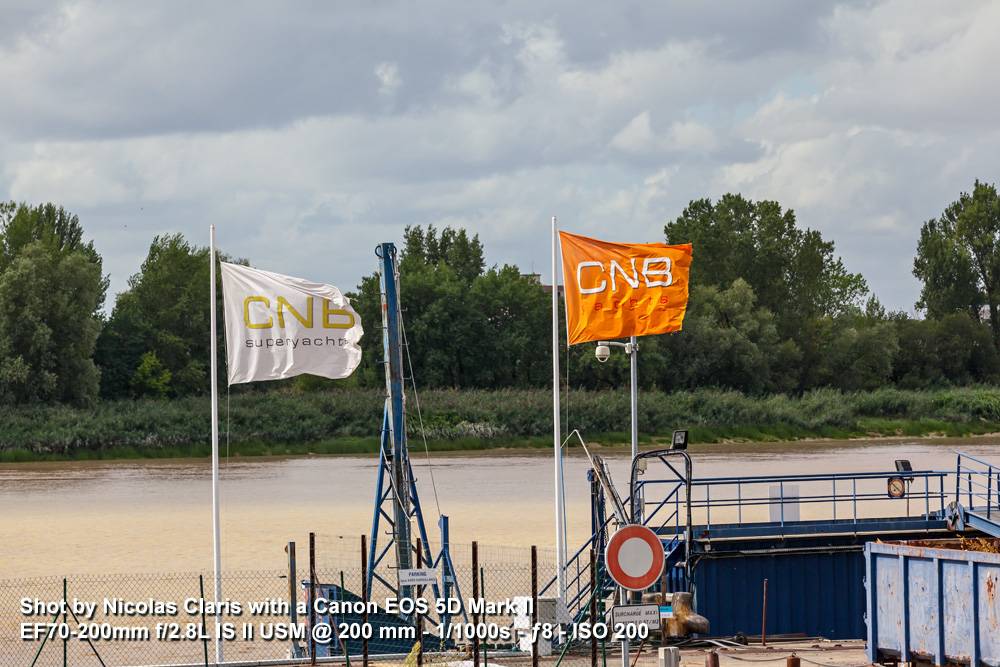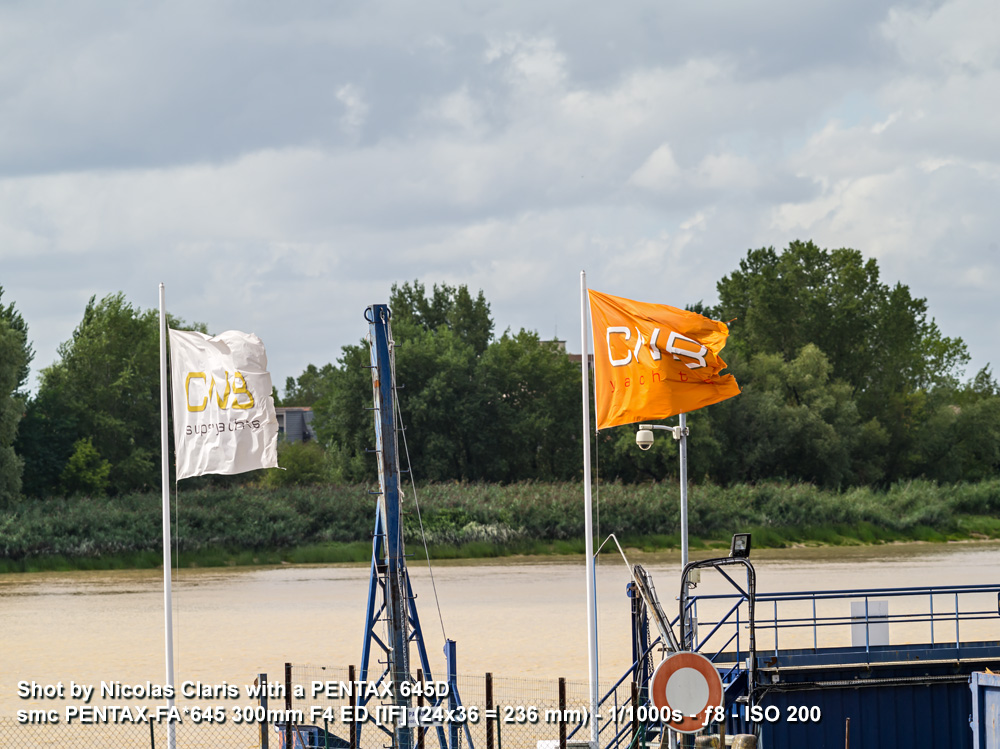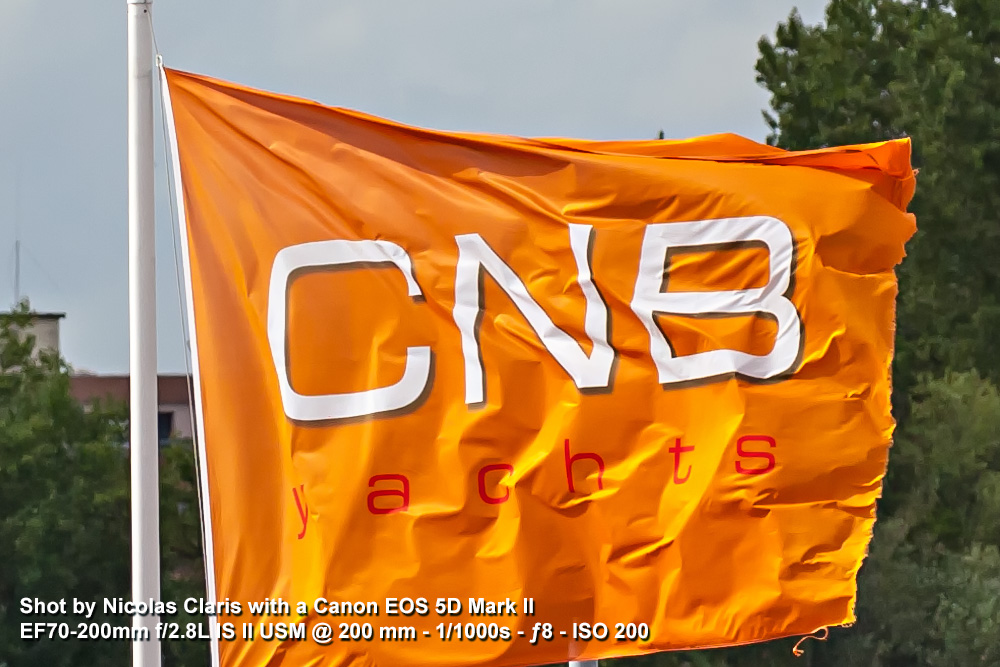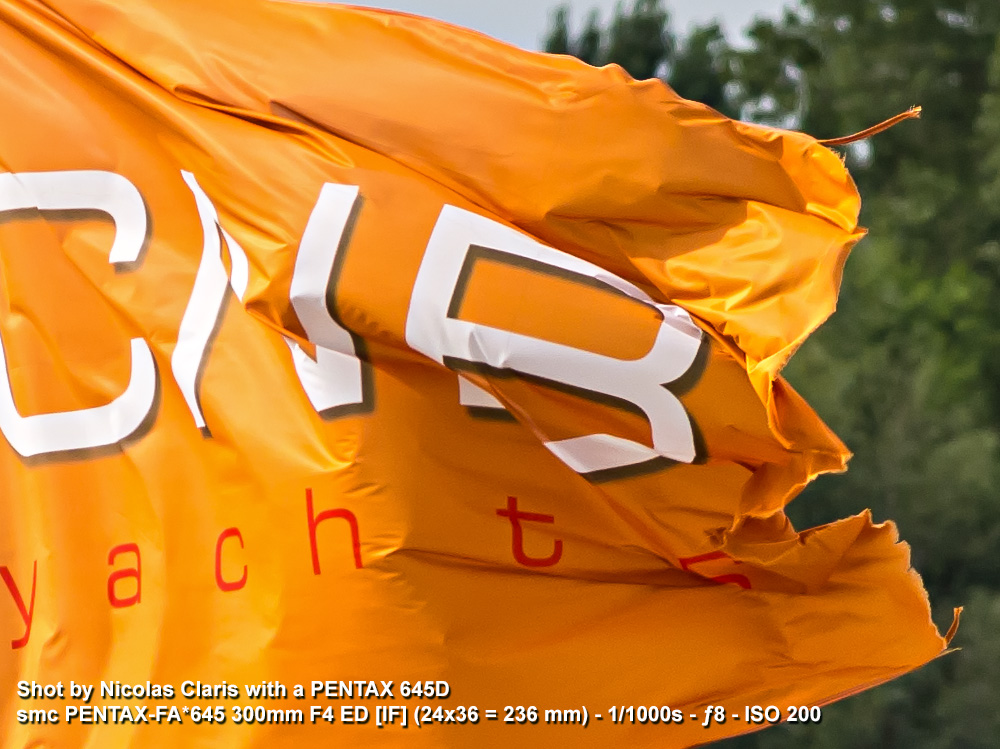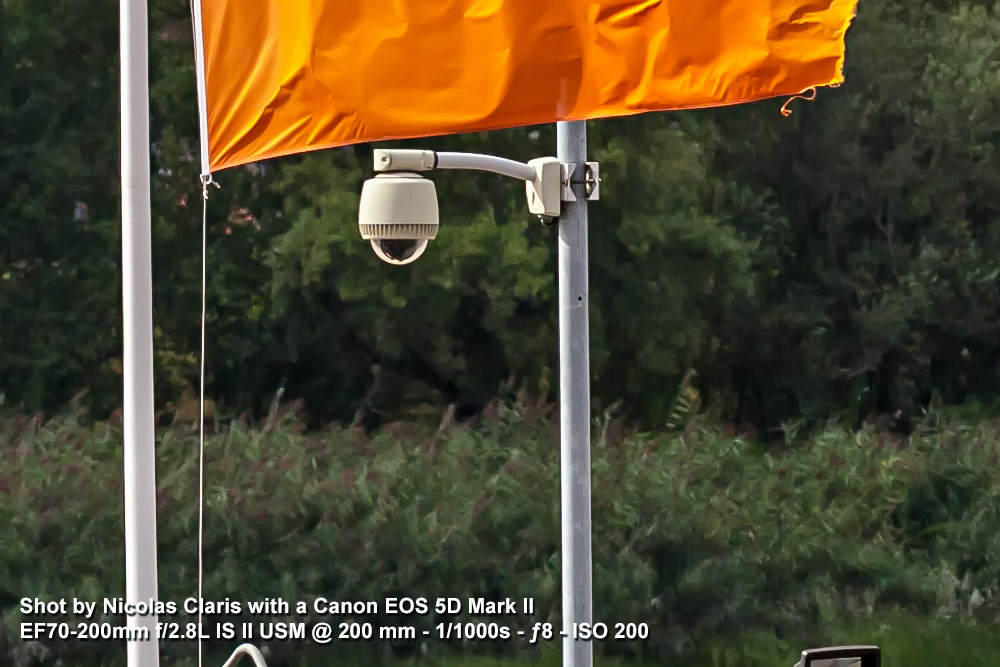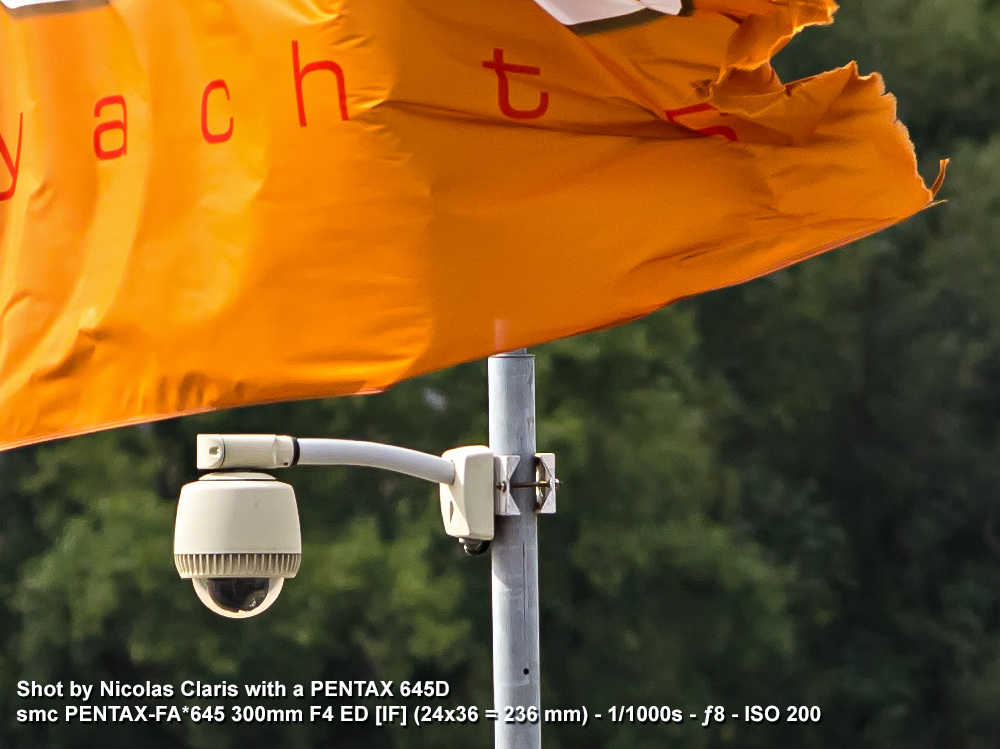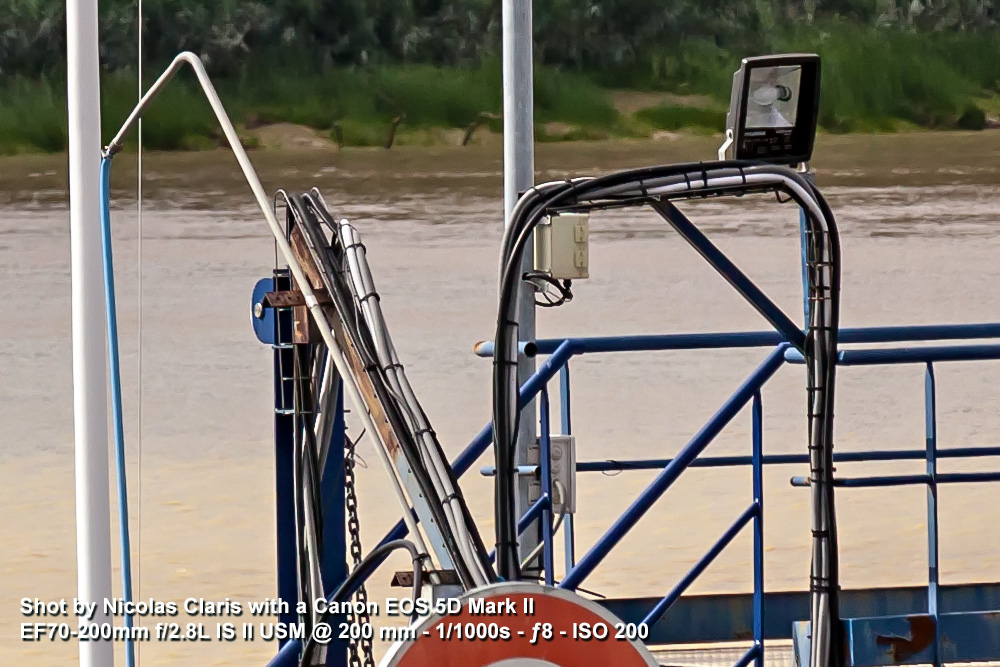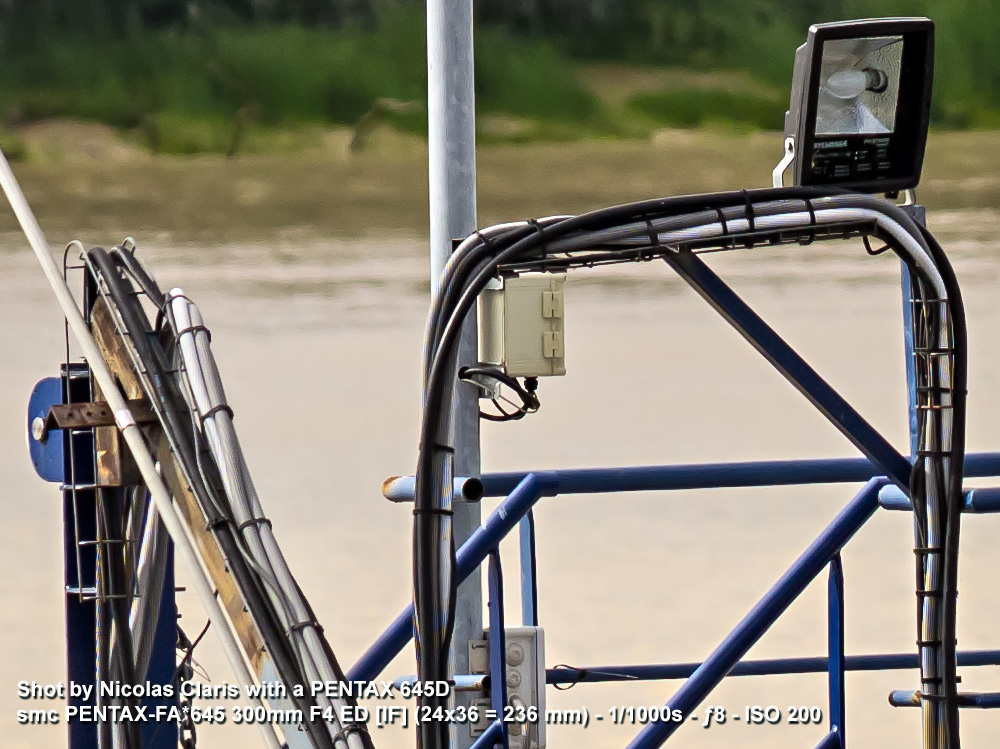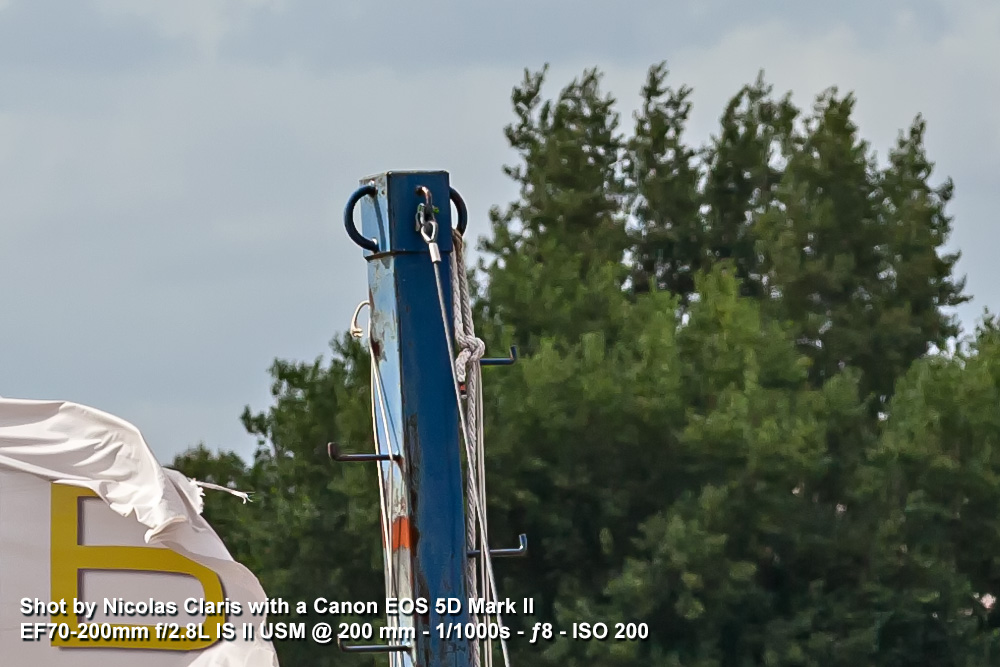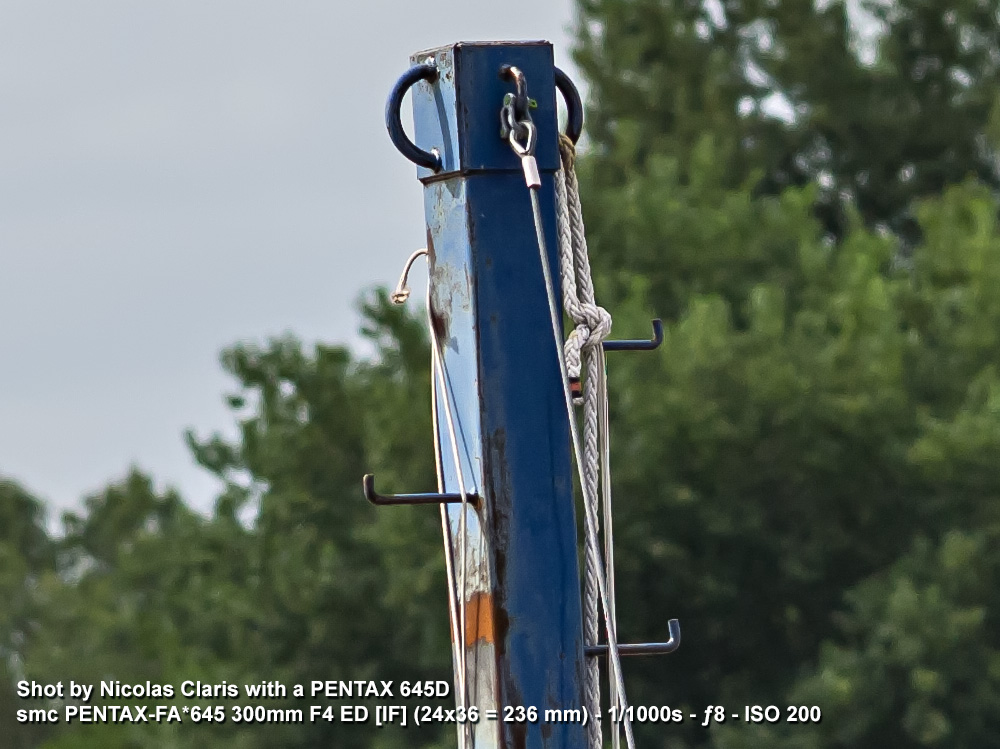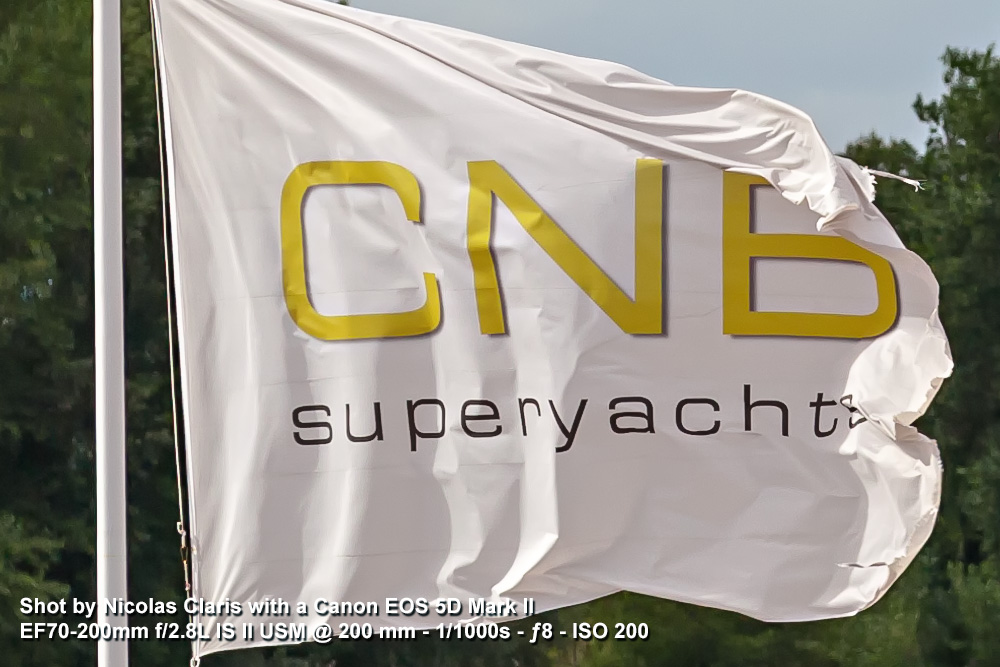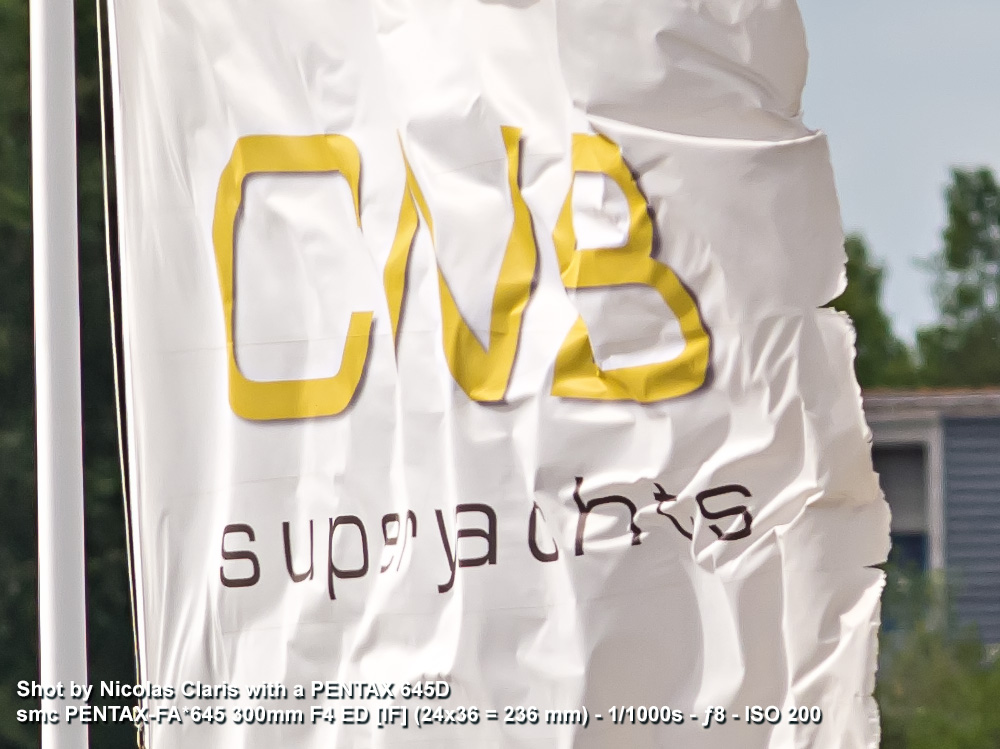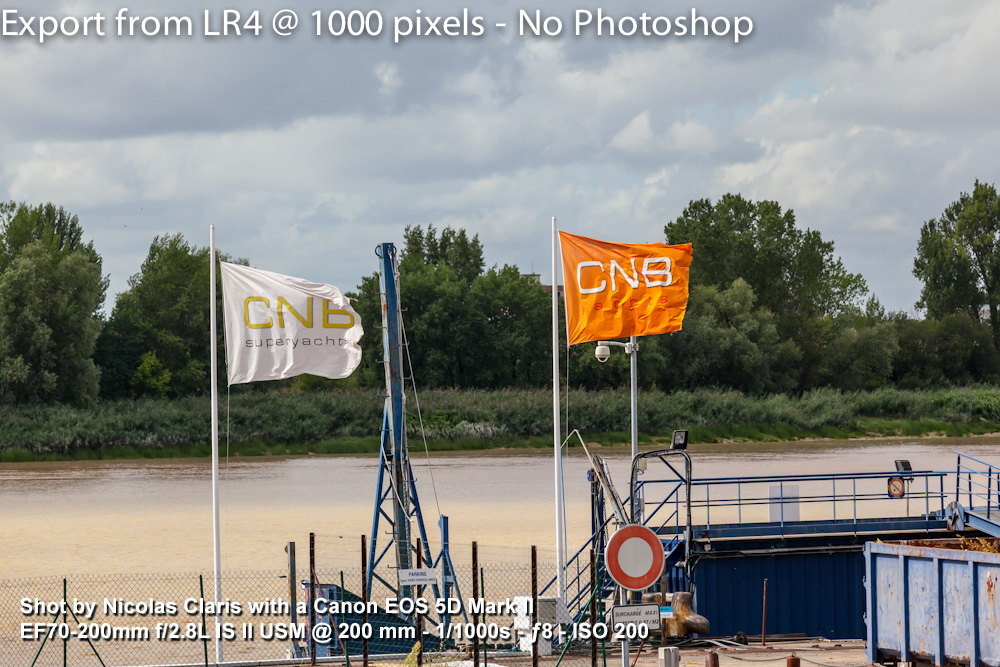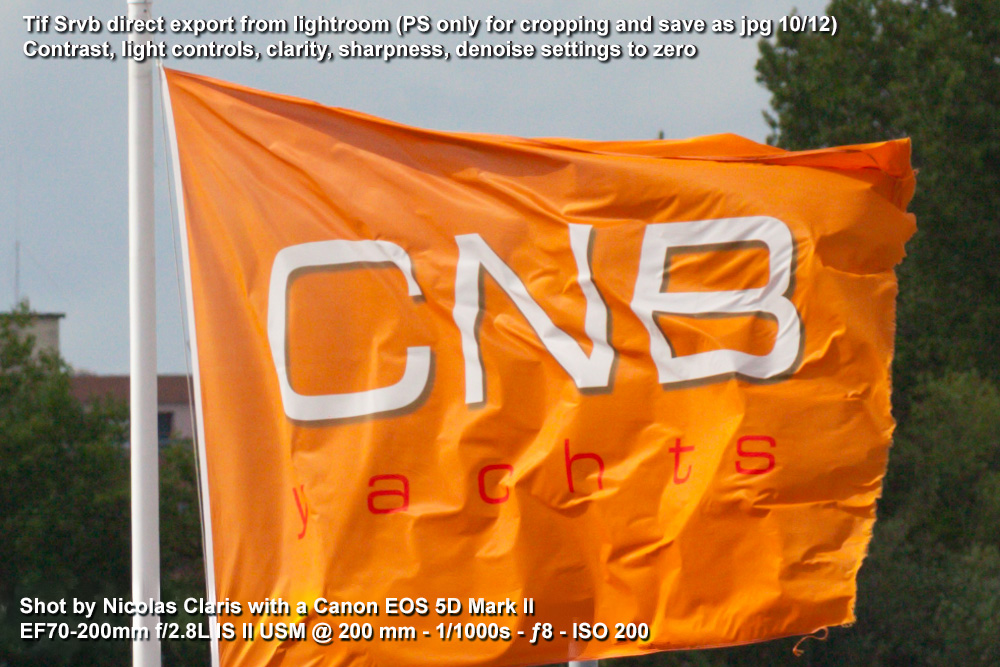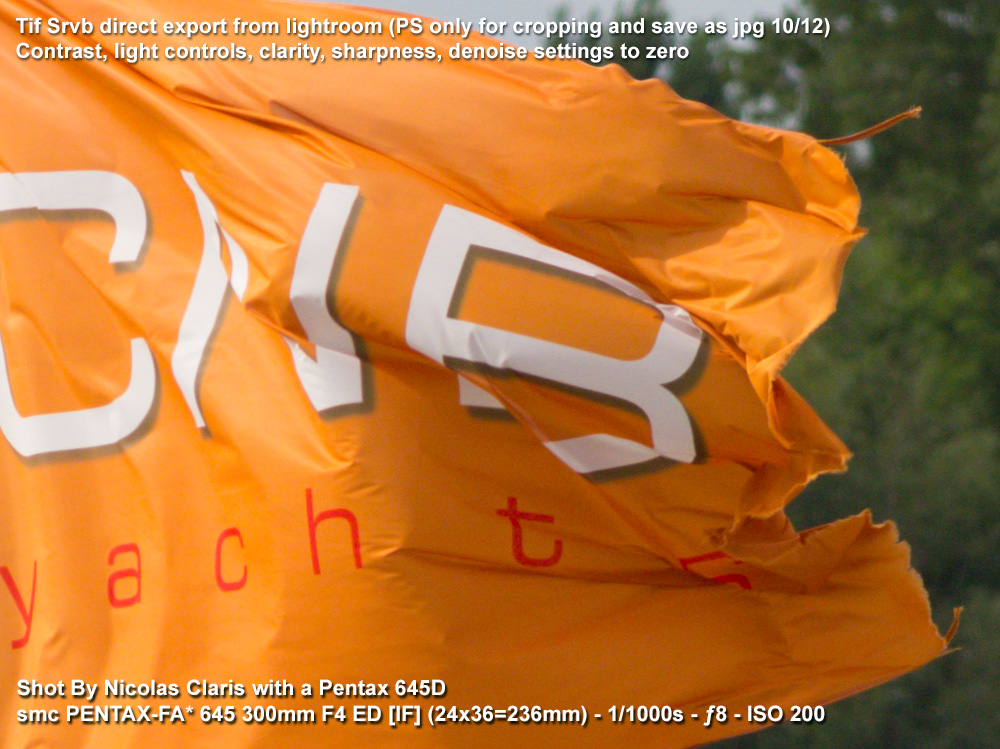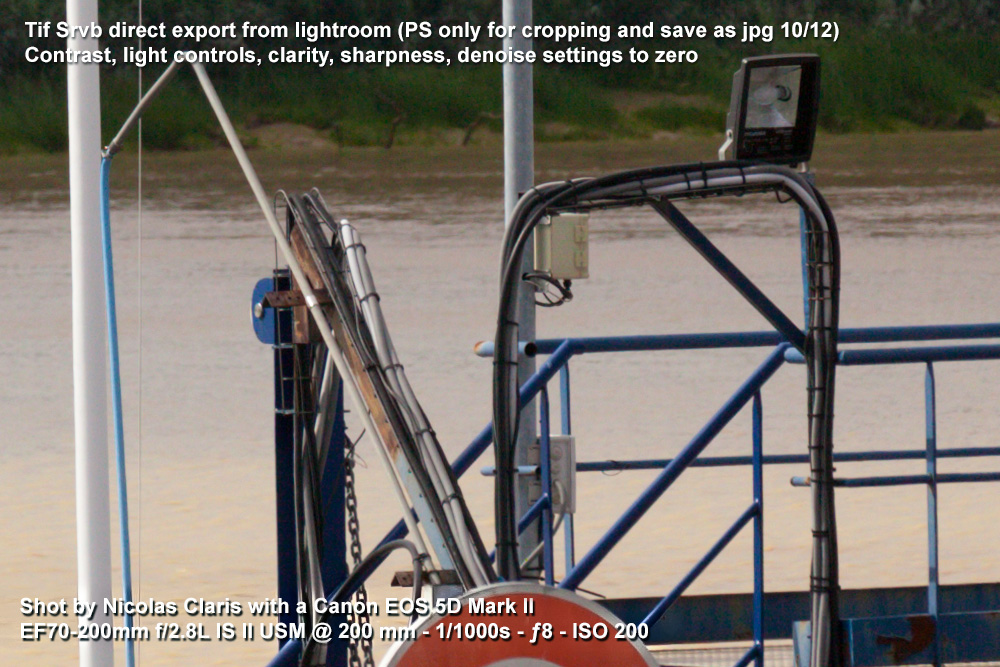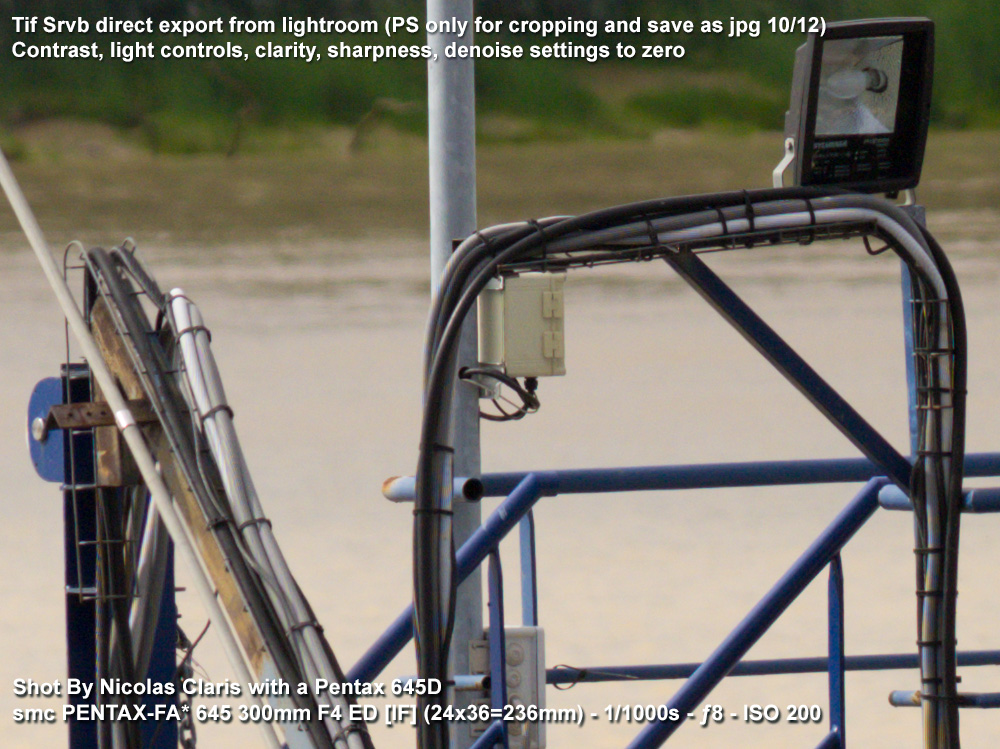As Asher as requested*
here a handheld comparison, shooting flags on shore with long length with full frame DSLR and the MF Pentax 645 D, here we are, just hot shots…
Distance from camera to flags = 90 mètres / 296 feet.
All raw files edited in Lightroom 4.1 with nearly same settings. I tried to get them as close as possible to my taste, forgetting wich camera did shoot ; )
* Asher's requests are almost orders! ; )
A comparison between:
Canon EOS 5D Mark II - EF70-200mm f/2.8L IS II USM @ 200 mm - 1/1000s - ƒ8 - ISO 200
and
PENTAX 645D - smc PENTAX-FA*645 300mm F4 ED [IF] (24x36 = 236 mm) - 1/1000s - ƒ8 - ISO 200
Nicolas,
It was so easy for me to challenge you but far more difficult to work on the result as they are all great! I'll tackle this first set. Hopefully other comments will follow!!

The most obvious differences relate to the larger format effect of the Pentax 645D at the relatively open aperture of f 8.0. Here, we have to choose what we value. For landscape images, we might really want to have the trees in the background very sharp with the form and colors perfectly drawn. So immediately, the Canon at 8.0 would do a far better job in the 35mm format. In fact, at any smaller aperture for the Canon lens, would lead to image degradation because of the tiny 5DII sensel size would show and define diffraction artifacts from the edges of the relatively tiny lens aperture.
OTOH, for isolating important subject matter, throwing the background out of focus with a pleasant blur is an advantage. So with the Pentax 645D, even at f8.0, the foreground flag is brought out so much more clearly against this softer background. That's an advantage for isolating a subject, especially in portrait. If one wants the same clarity of the background to appear, then one has to stop down considerably. I'd imagine that f22 would be about right. But then, one would have to push the ISO to 800 for the Pentax 645D which might mean noise reduction. However, likely as not, that would be accomplished with no degradation of the image.
For me, with a consideration of shooting portraits, the soft background of the Pentax 645D images is very pleasant. If one looks at the gaps in the leaves of the trees, there's a soft halo artifact. It's not jarring and doesn't degrade the photograph in any way, from my point of view. Still, one has to recognize that this edge effect is present. Could it be a jpg artifact? That I doubt too. Now one could describe that as painterly and desirable. Or perhaps it's a jog artifact, but that I doubt. It is almost as if the leaves are acting as a secondary aperture and we are getting artifacts.
Overall, at the chosen aperture of f8, the entire image, is obviously more satisfactory as a picture postcard from the 5D mark II, as everything is rendered well. However, that's not the subject of the test! Here it's just the flag and that's where the Pentax does an especially fine job, to be addressed in the following post.
Asher
